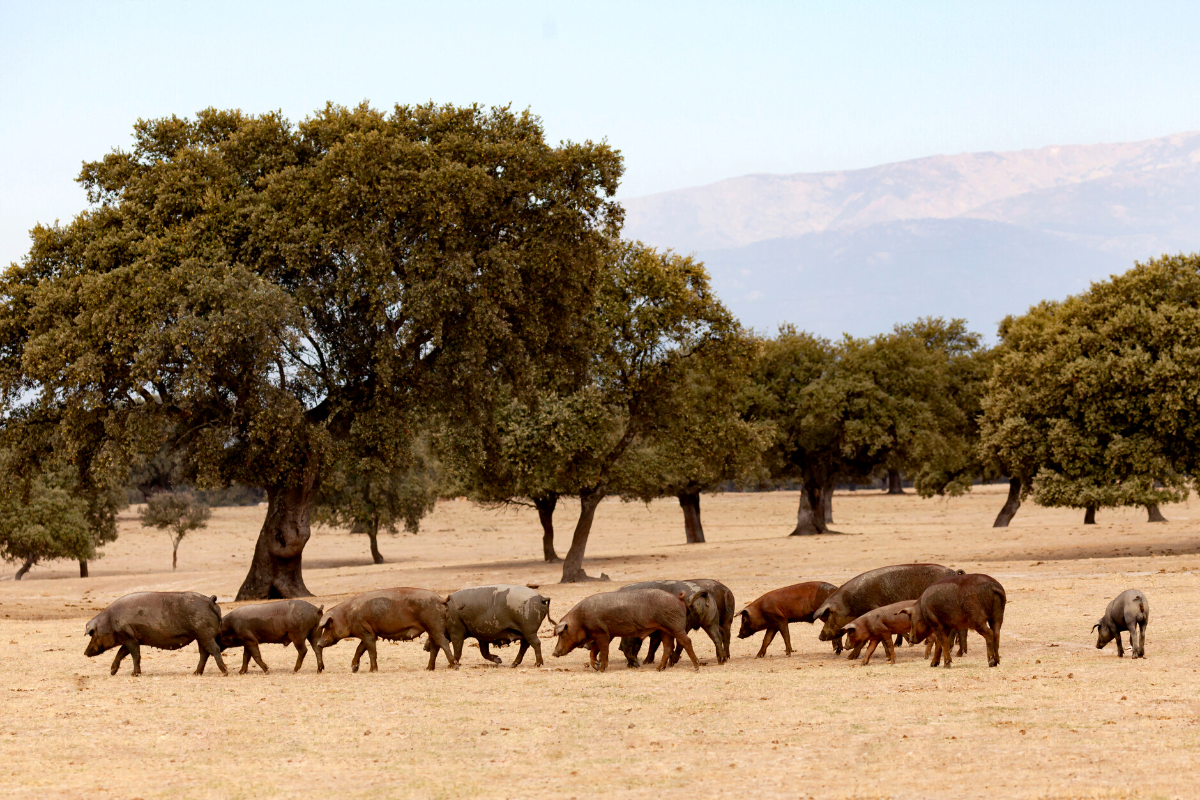Learn the secrets of Andalusian cuisine and the types of long-matured, fine hams! Find out where the difference in taste between jamón ibérico and jamón serrano comes from? We will also tell you today how to easily distinguish between these Spanish delicacies in the shop.
Oak diet
The taste of this meat varies depending on how the animals were raised and what they were fed. This does not make a difference to the meat from pigs of the white breed, which is used to make jamón gran reserva (or jamón serrano). However, in the case of the Iberian breed, the diet of the animals plays a significant difference.
We can therefore distinguish between two types of jamón ibérico: jamón ibérico de cebo – from pigs fed with fodder on farms, and jamón ibérico de bellota – meat from Iberian pigs living on pasture, eating acorns, roots and grass. Iberian pigs have a dark, almost black colouring (hence they are called black) and are only found in this region of Europe. Their ancestry dates back to the Neolithic period, and the progenitor of the entire species was the Iberian wild boar.

Green pastures
Iberian pigs are reared in the wild, in green pastures, or dehesa. This is a specific ecosystem, characteristic of central and southern Spain and southern Portugal. They are home to holm oaks, cork oaks, gall oaks and pin oaks, but also chestnut trees, olive trees, pine trees, glutinous pistachios, strawberries or roses. Spanish dehesas cover between 3.5 and 5 million hectares, of which around 950,000 are in Andalusia. Sheep, goats, fighting bulls, Andalusian donkeys or white cows and blue hens from the Extremadura region are also reared on traditional farms. The area is also a refuge for endangered animal species, such as the imperial eagle.

Know a ham by its label!
How do you quickly differentiate between hams? By the colour of the label!
Jamón ibérico puro de bellota – with black label, 100% meat from black pure-bred Iberian pig, fed with sweet acorns. Matured for approximately 4 years!
Jamón de bellota – with a red label, produced from a cross between the black and white Iberian pig breeds.
White and green label jamón ibérico – this is meat from a cross between a white pig and an Iberian pig, but fed with forage. Such ham takes about a year to mature.
Portions of ham, if kept in the fridge, should be taken out of the fridge for at least an hour before serving. Serve it at room temperature to best bring out the depth of flavour.

Spanish cuisine is world-famous not only for its delicious ham, but also for its cava, wines from the jerez triangle region or or Moorish flavours. Add to this an evening with friends, with a glass of wine, in one of Andalusia’s atmospheric old towns, a show of real flamenco. How about lunch in Puerto Banus, overlooking the African coast? Sounds like a beautiful life?

